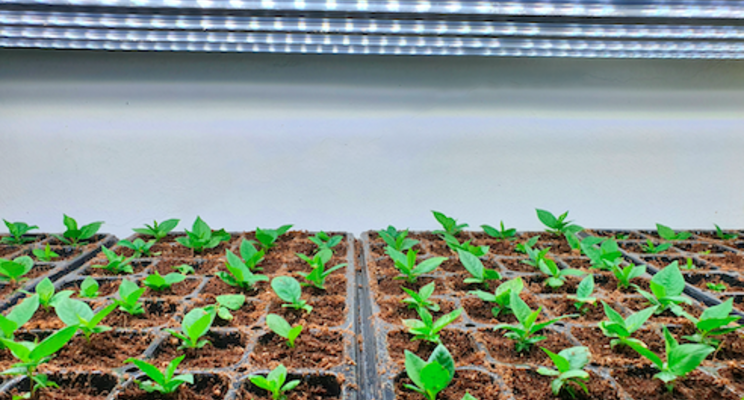A guide to horticultural lighting
Added on 21 February 2022

There are thousands of choices for lighting available on the market today. These range in quality, efficiency, rebate eligibility, intensity, spectrum range, cost and more. So how do you begin to narrow down your choices and find the best option for your farm?
Start with the basics. You don't need to become an engineer to make the right purchase. But you should have a basic understanding of what to look for in your lighting selection.
What is PPFD and PPF Efficacy?
PPFD stands for Photosynthetic Photon Flux Density, which is the amount of light energy available per square meter of leaf surface area. The higher the PPFD, the more light energy available to your plants. Plants use that light energy during photosynthesis to convert carbon dioxide into carbohydrates, which they then use to grow and reproduce.
PPF efficacy measures the energy efficiency of a light fixture. This is done by determining how much light (photons) it produces per watt of electricity.
When you're ready to start shopping for commercial grow lights, understanding these measurements will help you compare different brands. Which light will be more energy efficient? Which fixture will produce the kind of output you need? Being able to read these measurements will help you answer those questions. You will also need these calculations when designing your lighting layout.
When making your lighting selection, some vendors will provide a PPFD model. These models show PPFD measurements at different locations across the plant canopy at a given mounting height. This gives you clearer insight as to how much light your plants will receive in similar conditions.
You should first understand the ideal PPFD for the crop that you're cultivating, and ensure that the PPFD model for the light you're considering provides that photon density. Consistency of PPFD is also very important. The PPFD model should demonstrate a fairly consistent photon density across the plant canopy. This way you can make sure that you will be able to maximize production out of every inch of your plant canopy.
How Does Color Spectrum Affect Plant Growth?
The color spectrum of light - namely blue, red/yellow, and even green - has been shown to encourage different growth responses in plants. One of the benefits of cultivating indoors is that growers are not reliant on the sun, and can control the light spectrums they expose their crops to. Manipulation of the light spectrum, in conjunction with other factors influencing plant metabolism, can produce a specific result in plant growth, harvest quality, and yields.
Blue light is the most prominent color of the spectrum. Blue light stimulates plant growth, and is best suited for the vegetative phase of growth.
Red and yellow light is often chosen for flowering plants as it promotes budding. This is because red is the easiest color on the light spectrum for plants to use to create energy through photosynthesis.
Green light is used by the plant, although not as efficiently as red or blue. Canopy penetration is limited without green light, however, and yields can suffer as a result. Incorporating sufficient levels of green light also allows growers to detect early signs of possible infestations by bugs, bacteria, fungi, mold, and other issues.
Lighting Types
While there are a number of lighting technologies in use in indoor cultivation, the two most prevalent technologies are HID and LED (this is true in both craft and large scale commercial operations).
Click here to read more.
Photo created by wirestock - www.freepik.com
Source: Agritech Tomorrow
More news















